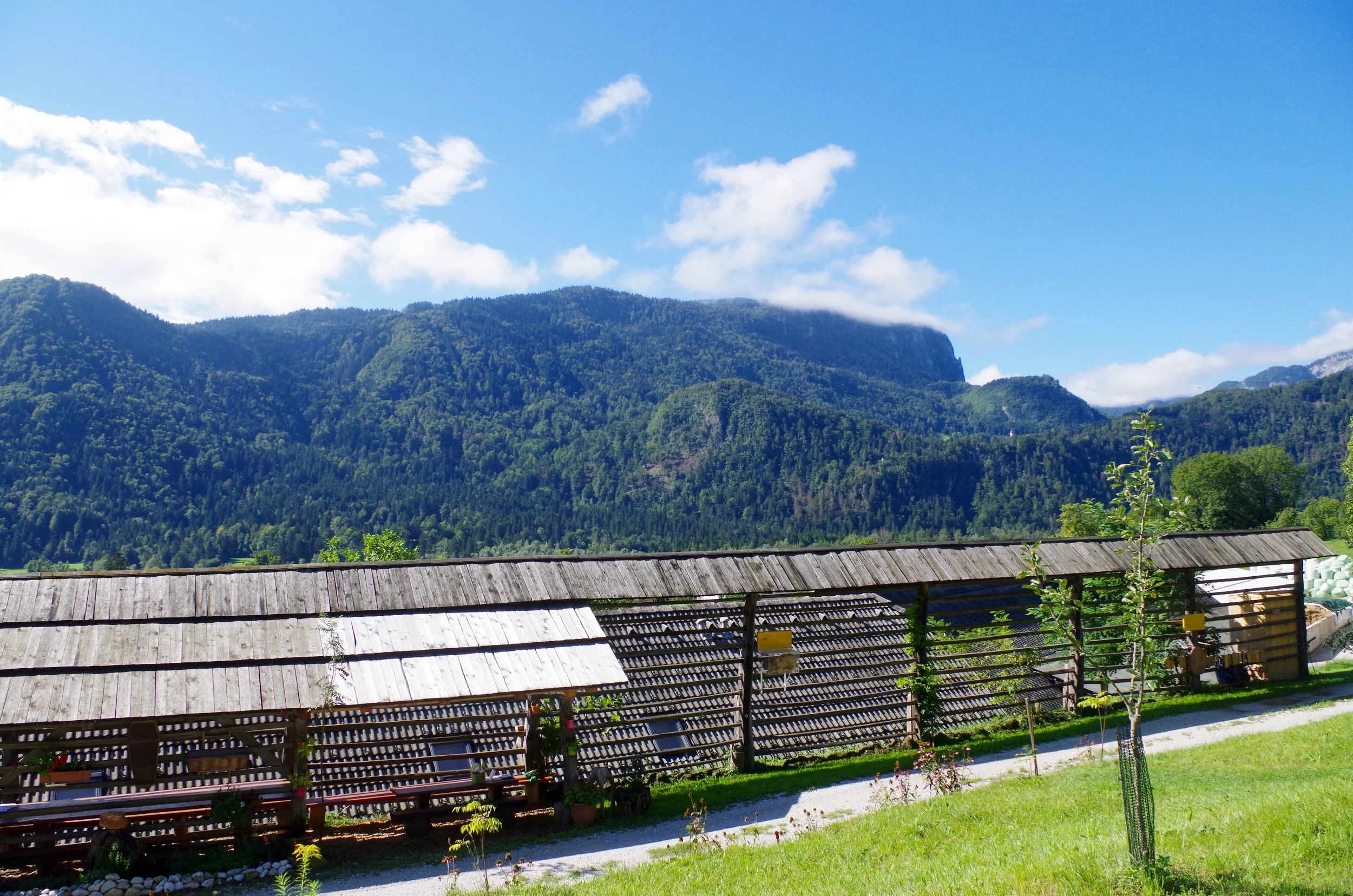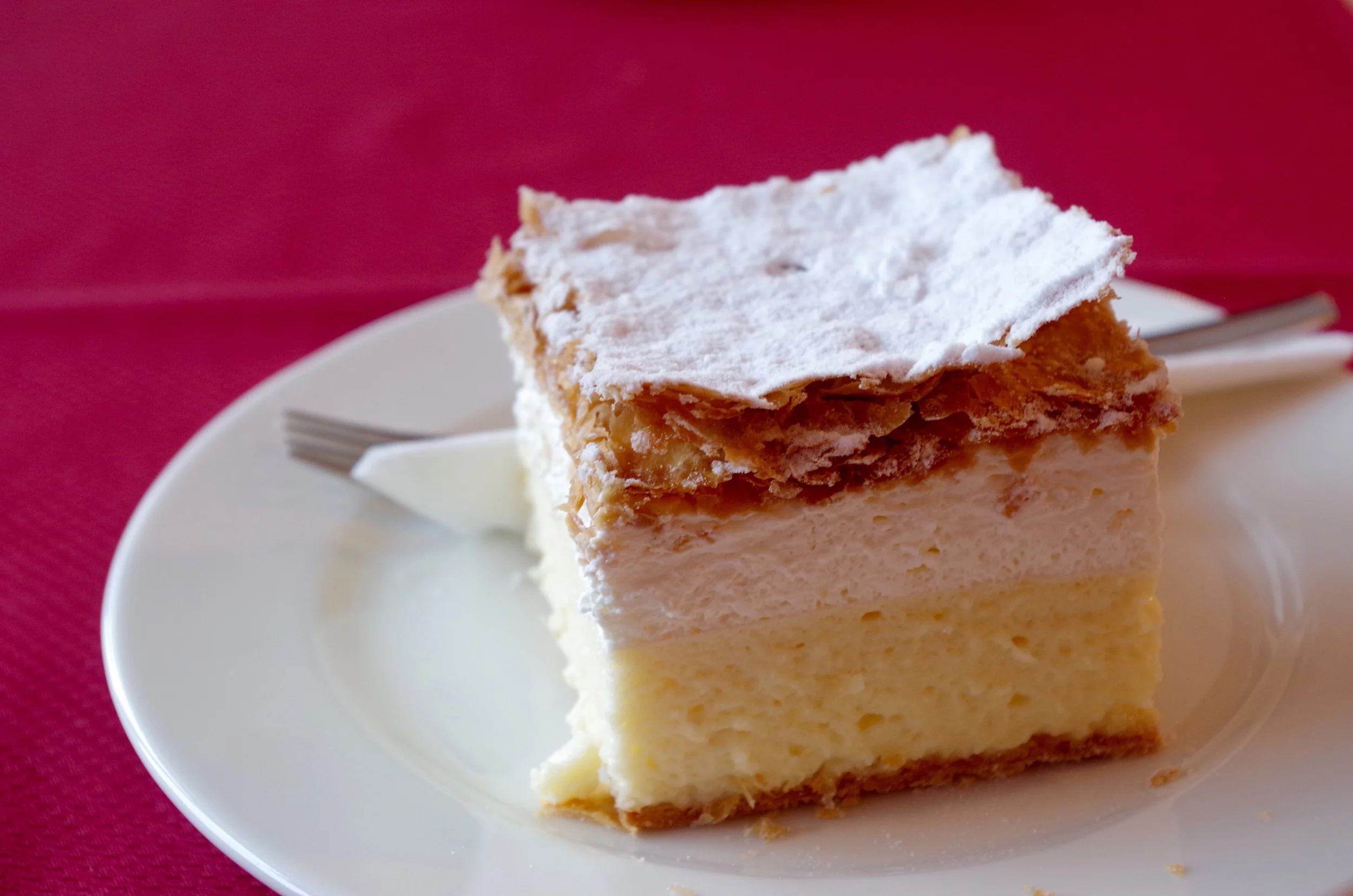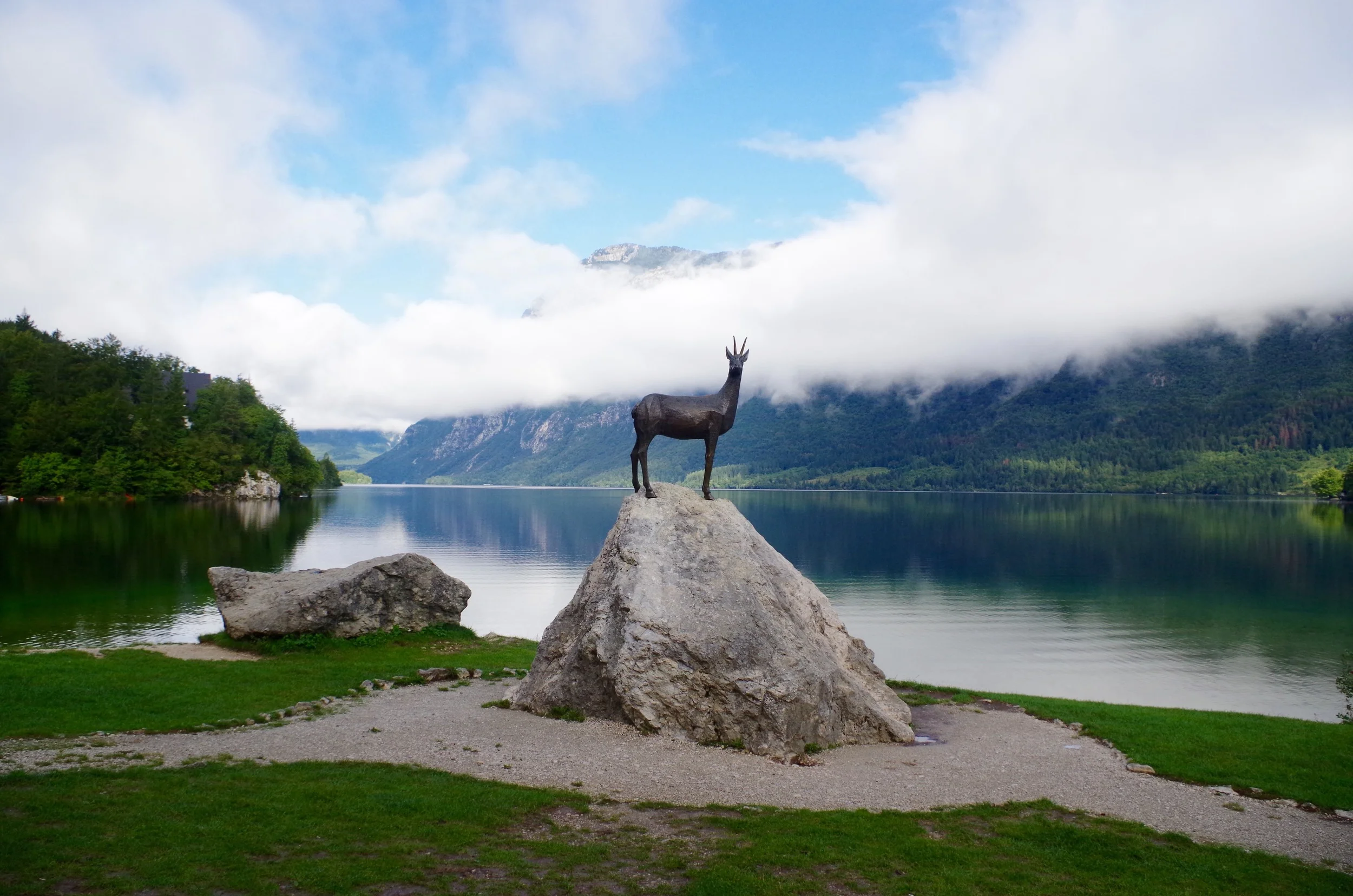All photos by Erica Buist
A shorter version of this article was published on Guardian Travel.
I’m lying facedown in a shed letting a woman pour honey on me. I must look like a giant piece of toast. A skylight throws fading sunrays onto the massage table; I close my eyes and try to relax as the masseuse starts to pat her sticky hands across my skin. The room smells like a sauna, honey, and pollen, and gently vibrates with the sound of tens of thousands of bees, hard at work on the other side of the wall.
I’m in Maribor, Slovenia’s second-largest city, where members of the Slovenian Beekeeper’s Association Karl and Marija Vogrinčič give api-wellness treatments in a shed they’ve built onto the back of the apiary in their garden, complete with a daybed above the hives where you can lie on cushions and relax to the sound of the bees. Honey massage, api-therapy treatments, apiary tours and honey tastings are all on the itinerary as bees become a focal point in tourism across the country. So bee-geeks (beeks?) and the api-curious can rejoice: bee tourism is a thing.
Addicted to travel? Want to read an entire book about it? Check out Erica's book in which she travels to seven death festivals around the world!
And it can’t come a moment too soon: bees are in crisis. According to the British Beekeepers Association, one in three mouthfuls of food is dependent on pollination, and research by University of Reading suggests bees contribute £651m annually to the UK economy – yet numbers are falling, largely due to habitat loss, climate change and pesticides.
Slovenia's "Alpine Jewel", Lake Bled
It’s no surprise that api-tourism is exploding here: Slovenia is bonkers for beekeeping. In the population of 2 million, there are five beekeepers in every thousand, and eight hives per square km (in the UK, just one). The average beekeeper age is falling as more young people take it up: many turned pro during the economic crisis. Slovenian bees have it made – Slovenia is almost 60% forest, and their “landlords”, the beekeepers, have an unwritten rule to only collect 20% of the honey they make.
I’m here to check out what bee fans can get up to, once I get out of this sticky situation: the honey massage, which I naively assumed would be with some sort of honey-scented oil. My masseuse Marija repeatedly pushes her hands into my honey-covered back and pulls them off. At first it feels like a cack-handed waxing treatment, but within two minutes she converts me. The pull of the skin as it unsticks from her hand and snaps back into place is oddly satisfying (though shaggy-backed chaps might want to sit this one out). Having endured regular sports massages – which is basically paying sadists to slowly punch you in the achey bits – a honey massage in a quietly-vibrating honey-scented room is a glorious indulgence. At the end she lays a hot, wet towel across my back; it’s so relaxing I have to tug the reins on my salivary glands. After she wipes away the honey, my skin feels like warm silk. I spend a few minutes unnerving people by backing into them with my shirt lifted shrieking, “Feel how soft I am!”
The view from Kralov Med
If you want to meet the bees, a must-visit is the apiary Kralov Med (“med” means honey) in the village of Selo pri Bledu, about 10 min from Slovenia’s “alpine jewel” Lake Bled. A one-to-two-hour tour at the apiary, with its lush mountain backdrop, costs €4 per person and includes a meet-and-greet with the bees, an informal talk on how beekeeping works, and honey tasting.
Honey tasting at Kralov Med
Beekeeper Blaž Ambrožič is in the middle of a fascinating demonstration of how honey is stored in honeycomb when a bee gets trapped in my hair. The buzzing by my ear is impossibly loud as it tries to struggle out of the tangled tresses. My shrieking gives the other apiary visitors the idea I’ve been stung – but I haven’t. Slovenes take great pride in the gentleness of their only indigenous bee species, the Carniolan bee, and of course, for journalistic purposes it had to be tested. Once the poor thing is free, it appears to forgive and immediately forget, returning to work as if nothing happened.
"Here are some bees. Sure hope none of them get stuck in my hair."
We handle a honeycomb buzzing with docile bees at work, and then taste harvested honeycomb, which is smooth and luxuriously sweet (until you’re left with wax in your teeth). As we sip shots of syrupy honey liquor, Ambrožič dolls out home remedies like tic-tacs – a mouthful of pollen for vitamins, a spoonful of honey for insomnia, “apitherapy” for asthma. Apitherapy is the medicinal use of bee products, but Ambrožič is referring to inhaling beehive air through an oxygen mask to help with respiratory problems. The medicinal evidence is anecdotal, but it smells pleasant, like warm honey cake.
Traditionally Slovenian beehives are adorned with painted panels, depicting religious or cartoonish scenes, such as two men fighting over a cow while a lawyer takes the milk, or women dragging their husbands from the pub. Danijela Blaž at Kralov Med runs panel-painting workshops, and there is even a Museum of Apiculture in the beautiful town of Radovljica, a 30-minute drive northwest of Ljubljana. The museum displays 600 original hive panels, and visitors can learn about the history of Slovenia’s rich tradition of beekeeping, as well as see some of the tools used in early apiaries.
Urban beehive
While 97% of Slovenia’s beekeepers are in the countryside, the past five years has seen a rise in urban beekeeping, and the urban hives are worth a stop on any api-tour. In Ljubljana, Europe’s Green Capital 2016, there are around 30 beekeepers in the city centre. Gorazd Trušnovec, president of the Urban Beekeeping Association, keeps bees on his apartment block balcony, and in a city centre community garden. Franc Petrovčič, deputy technical director at Cankarjev Dom (the Ljubljana cultural centre) started a beekeeping initiative on the roof and gives jars of honey as gifts to the performers.
Beekeeping on the roof of Cankarjev Dom (the Ljubljana cultural centre)
Amazingly, city centre bees actually produce forest honey, since they’re just 1km from the nearest forest. “Bloggers said the honey would be black because of the pollution,” says Petrovčič, but the urban bees produce even healthier honey than country bees since they tend not to come into contact with pesticides. There are more immediate concerns for beekeepers than pollution: bees can’t forage in rain. 2014's wet summer in Slovenia meant less than 500 tons of honey were produced, compared to 2,400 in 2013 and 2,000 in 2015. Also, the fatal threat of varroa mite infestations always looms. The British bee crisis stems from the same issues – last year’s honey harvest was down 34% because of “poor and variable weather” – with extra threats posed by extensive use of pesticides and depleting flower habitats.
View from Ljubljana castle
Visitors to Slovenia who aren’t bee fiends will find there’s plenty more to the country (check out this incredibly comprehensive guide here), and with growing choice in places to stay. The magnificent “Alpine jewel” of Lake Bled really can’t be missed – and I’ll join the locals in recommending the gloriously calorific local speciality, kremsnita (Bled cream cake).
Without wishing to be controversial, nearby Lake Bohinj might even be more stunning – and you can have an energy-efficient stay at the nearby Bohinj Park ECO Hotel. If honey massage isn’t your thing, the city of Maribor has plenty more to offer – it’s in the Guinness Book of World Records for having the world’s oldest grape vine. After marvelling at the over-400-year-old vine, pop inside for a wine tasting (though not from the Old Vine – our guide says the wine it produces isn’t the best). A city tour in Ljubljana is a must, with or without a tour of the city’s apiaries, and for a slightly different city break experience stay at Ljubljana at Posest Trnulja. Located on a beautiful country estate with an organic farm, just a short drive from Ljubljana’s city centre, guests stay in wooden “bio apartments” and are served organic meals. Stewed donkey, anyone?
Lake Bohinj
Having met the bees, it’s only right to taste the fruits of their labour: head to the village of Razvanje just outside Maribor, where beekeeper Marko Cesar offers tastings of products such as sparkling mead, a Slovenian speciality. It’s a pricey souvenir at €25 a bottle; it looks like prosecco but contains only water and chestnut honey, which is less sweet and cloying than other honeys. We dip wooden tasting sticks into a range of flavoured honeys, like blueberry or cinnamon – the hazelnut chocolate is dangerously moreish.
Honey mead
For a more traditional honey product, head to Radovljica. The 200-year-old restaurant Lectar produces honeybread in their basement bakery. Made of flour, honey, cinnamon, cloves, a pinch of ginger and a few “secret ingredients”, the lack of dairy stops the heart-shaped cookies going off. Traditionally a smitten boy would give it as a gift: if the object of his affections ate the cookie, she didn’t return his feelings. ApiRoutes, the tour group currently pioneering api-tourism in Slovenia, also offer honey-based culinary courses on request.
Decorating honeybread at Lectar
Though I’m still not quite sold on harvesting my own honey, Slovenia’s api-tourism has left me with soft skin, a surprisingly sincere interest in bees – and the blood-sugar levels of Santa Claus. Apologies in advance to whoever ends up sitting next to me on the plane home. I hope you like bee facts.
Lake Bohinj... come on, clearly the superior lake!
















